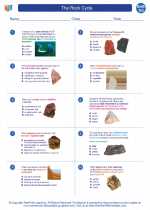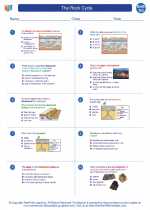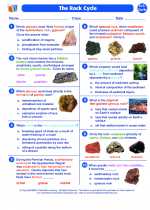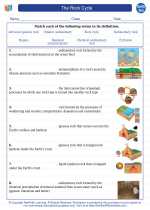Uranus
Uranus is the seventh planet from the sun and is the third largest in the solar system. It is a gas giant, similar to Jupiter and Saturn, and is composed mostly of hydrogen and helium, with a small rocky core. Uranus is unique in that it is tilted on its side, with its axis of rotation almost parallel to its orbital plane. This gives it extreme seasons, with each pole experiencing 42 years of continuous sunlight followed by 42 years of darkness.
Physical Characteristics
- Diameter: 50,724 kilometers
- Mass: 8.68 x 10^25 kilograms
- Atmosphere: Mostly hydrogen and helium, with some methane which gives it a blue-green color
- Moons: Uranus has 27 known moons, the largest of which are Miranda, Ariel, Umbriel, Titania, and Oberon
Exploration
Uranus has been visited by only one spacecraft, Voyager 2, which flew by the planet in 1986. It provided the first close-up images of the planet and its moons.
Study Guide
- What is the composition of Uranus' atmosphere?
- How does Uranus' axial tilt contribute to its extreme seasons?
- What are the names of some of Uranus' largest moons?
- When was Uranus first visited by a spacecraft?
- What is the diameter of Uranus?
By studying the unique characteristics of Uranus, you can gain a deeper understanding of the diversity of the planets in our solar system.
[Uranus] Related Worksheets and Study Guides:
.◂Earth Science Worksheets and Study Guides High School. The Rock Cycle
Worksheet/Answer key The Rock Cycle
The Rock Cycle  Worksheet/Answer key
Worksheet/Answer key The Rock Cycle
The Rock Cycle  Worksheet/Answer key
Worksheet/Answer key The Rock Cycle
The Rock Cycle  Worksheet/Answer key
Worksheet/Answer key The Rock Cycle
The Rock Cycle  Vocabulary/Answer key
Vocabulary/Answer key The Rock Cycle
The Rock Cycle  Vocabulary/Answer key
Vocabulary/Answer key The Rock Cycle
The Rock Cycle  Vocabulary/Answer key
Vocabulary/Answer key The Rock Cycle
The Rock Cycle 

 Worksheet/Answer key
Worksheet/Answer key
 Worksheet/Answer key
Worksheet/Answer key
 Worksheet/Answer key
Worksheet/Answer key
 Vocabulary/Answer key
Vocabulary/Answer key
 Vocabulary/Answer key
Vocabulary/Answer key
 Vocabulary/Answer key
Vocabulary/Answer key

The resources above cover the following skills:
EARTH AND SPACE SCIENCE (NGSS)
Earth’s Systems
Students who demonstrate understanding can:
Develop a model to illustrate how Earth’s internal and surface processes operate at different spatial and temporal scales to form continental and ocean-floor features.
EARTH AND SPACE SCIENCE (NGSS)
Earth’s Systems
Students who demonstrate understanding can:
Develop a model to illustrate how Earth’s internal and surface processes operate at different spatial and temporal scales to form continental and ocean-floor features.
EARTH AND SPACE SCIENCE (NGSS)
Earth’s Systems
Students who demonstrate understanding can:
Develop a model to illustrate how Earth’s internal and surface processes operate at different spatial and temporal scales to form continental and ocean-floor features.
EARTH AND SPACE SCIENCE (NGSS)
Earth’s Systems
Students who demonstrate understanding can:
Develop a model to illustrate how Earth’s internal and surface processes operate at different spatial and temporal scales to form continental and ocean-floor features.